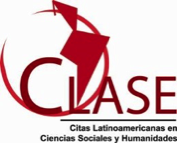The Media Archaeology Lab (MAL, University of Colorado Boulder, USA) as an Archive
DOI:
https://doi.org/10.30763/Intervencion.2016.13.155Keywords:
old media, laboratory, digital literature, practice-based research, media archaeologyAbstract
Founder and Director of the Media Archaeology Lab (MAL) University of Colorado-Boulder (CU-Boulder), United States of America (USA), Lori Emerson discusses both its history from 2008 to the present and its flexible philosophy of using hands-on access to so-called “old media” as a way to drive teaching, research, and artistic practice. Emerson also provides an OVERVIEW of this laboratory´s holdings, research projects as well as the artist residencies, all of them essential elements for MAL´s mission.
Downloads
References
ELMCIP (n.d.). Electronic Literature as a Model of Creativity, Available from [http://elmcip.net/], Accessed on 22 October 2015.
ELD (n.d.). Electronic Literature Directory, Available from [http:// directory.eliterature.org/], Accessed on 22 October 2015.
Hogan, Mél (n.d.). Mél Hogan [web page], Available from [http://melho¬gan.com/website/], Accessed on 29 October 2015.
Kittler, Friedrich (1985). Discourse Networks 1800/1900, Redwood City, Cali¬fornia, Standford University Press.
Marinetti, F.T. (2013). Selected Poems and Related Prose, Luce Marinetti (ed.), New Haven, CT, Yale University Press.
McLuhan, Marshall (1964). Understanding Media, New York, McGraw-Hill.
Nichol, bp (1983). First Screening [computer program poem], Toronto, Underwhich Editions.
Tzara, Tristan (2005). Chanson Dada: Tristan Tzara Selected Poems, Lee Harwood Boston (trans.), Black Widow Press.
AIMS (2013). “Appendix I: Digital Archivist Community”, Library of Virginia aims: An Inter-Institutional Model for Stew¬ardship, Available from [https://dcs.library.virginia.edu/ files/2013/02/AIMS_final_A4_appI.pdf], Accessed on No¬vember 2015.
Additional Files
Published
How to Cite
Issue
Section
License
Copyright (c) 2016 INAH, National Institute of Anthropology and History

This work is licensed under a Creative Commons Attribution-NonCommercial 4.0 International License.

Atribución-NoComercial 4.0 Internacional
https://creativecommons.org/licenses/by-nc/4.0/deed.es
Usted es libre de:
- Compartir — copiar y redistribuir el material en cualquier medio o formato
- Adaptar — remezclar, transformar y construir a partir del material
Bajo los siguientes términos:
-
Atribución — Usted debe dar crédito de manera adecuada, brindar un enlace a la licencia, e indicar si se han realizado cambios. Puede hacerlo en cualquier forma razonable, pero no de forma tal que sugiera que usted o su uso tienen el apoyo de la licenciante.
-
No Comercial — Usted no puede hacer uso del material con propósitos comerciales.




















